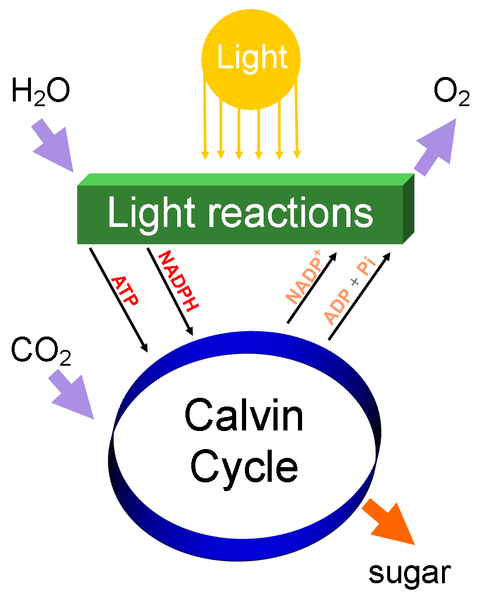Nutrition
Aconitum napellus gets its food through the process
of photosynthesis, or the conversion of light energy to chemical
energy.
The light reactions occur within the thylakoids of the
chloroplasts found in the plant leaf cells. Photosynthesis is
divided into two main processes, the light and the dark
reactions. In these thylakoids there are specialized pigment
molecules, the most important of which is called chlorophyll and
these pigment molecules are inside a structure called a
photosystem. Light enters these photosystem structures and
excites the chlorophyll pigments, once excited the chlorophyll
gives up electrons to an area in the photosystem called the
primary electron acceptor. These high energy electrons are then
passed down through a chain of proteins called the electron
transport chain, slowly losing energy with each successive
transfer. Eventually the electrons end up being transferred to
the special “shipping” molecule known as NADPH. The electrons
lost by the chlorophyll are replaced by water molecules. The
transfer of electrons to NADPH marks the start of the dark
reactions, or the Calvin cycle.

In the Calvin cycle the ATP and NADPH generated from the light
reactions is used up to help bind carbon dioxide molecules
together into a 3- carbon structure called G3P. This is done
through a series of oxidation-reduction reactions which makes
and breaks bonds as the carbon molecules change forms. G3P is
the precursor to most sugars! The sugar can then be either
transported, stored, or broken back down into ATP for the cells
to use. In A. napellus, is most of the sugar is either
broken down to give the plant energy for growth, but otherwise
it is stored down in the roots.
The water that the plant needs to grow and photosynthesize is
taken up through the roots from the soil.
The water and sugar is transported through the plant in
specialized tissues called xylem and phloem. To read more about
these unique transport tissues and how they work click on the
link here. It is important to recognize that plants can only
perform photosynthesis once they have grown leaves. In the short
stage in the plant’s early life when it is still covered by the
soil it actually is classified as being heterotrophic. This
young plant gets its nutrients from special tissue found within
its seed. This tissue is called endosperm and it takes up a
large portion of the inside of the seed. Endosperm is made of
energy rich materials, and it gives the plant just enough of a
boost to be able to grow out of the soil and make leaves. To
read more about the adaptation of endosperm
click here.
Autotrophs like A. napellus are extremely important in bringing
energy into ecosystems. The photosynthesis performed by plants
is what makes it possible for organisms as big as us to have
evolved!
To go back to the homepage click here.
